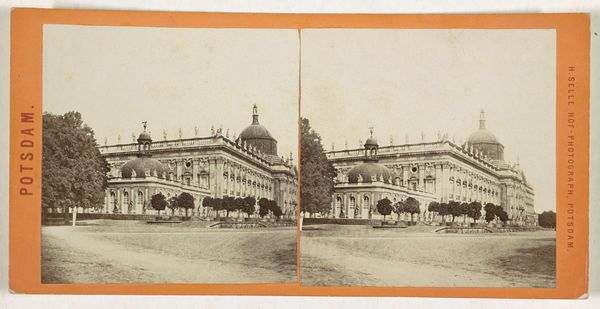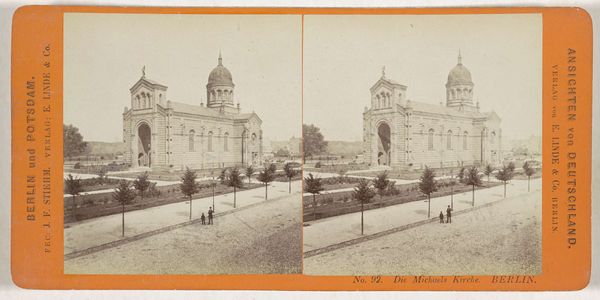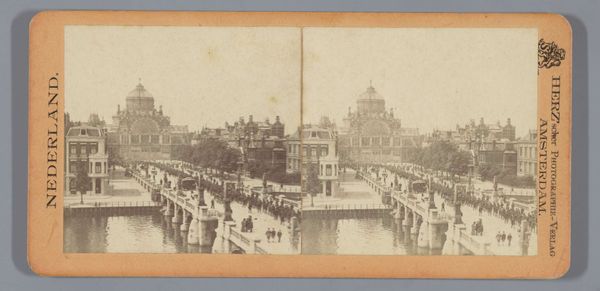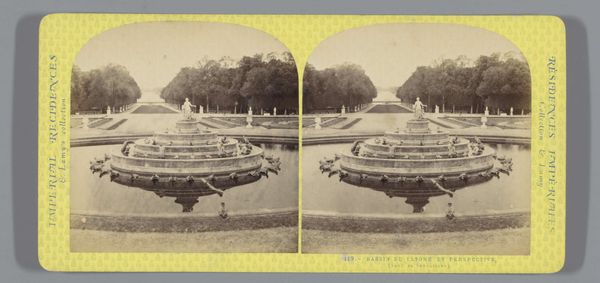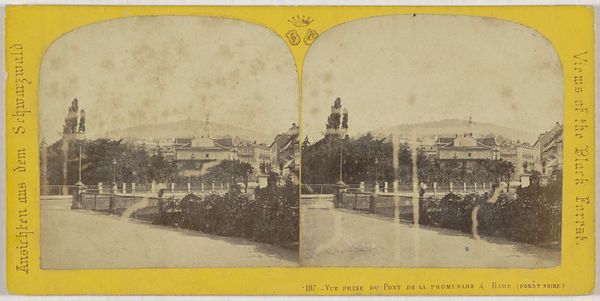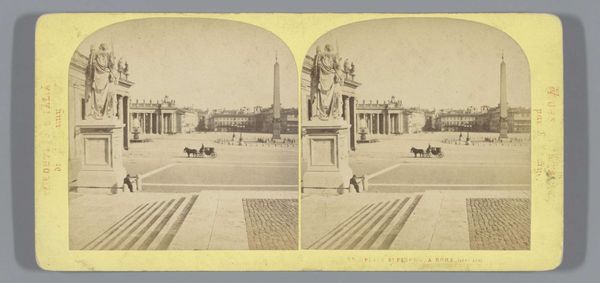
Dimensions: height 86 mm, width 176 mm
Copyright: Rijks Museum: Open Domain
Curator: This albumen print, "Lustgarten en de Dom van Berlijn," created by Johann Friedrich Stiehm between 1868 and 1870, offers a fascinating glimpse into 19th-century Berlin. It captures the Lustgarten park with the Berliner Dom in the background. Editor: Immediately, there's a feeling of almost theatrical staging to this. It's not just a document, it's... composed. I keep looking at the repetition, this doubling in a very odd scale. Makes it appear dream-like...or just... staged for effect. Curator: Well, that visual echo comes from it being a stereo card, intended to be viewed with a stereoscope for a 3D effect. But I agree, the composition is definitely deliberate. You see the river dividing the composition, full of commercial barges... all material means to get from here to there in the modern world. The artist here chose an Albumen-print. Its materials – the paper, the silver salts reacting to light—all come together here for this effect. Editor: It almost makes the boats feel more important than the Berliner Dom! Perhaps I'm overly drawn to the grit. All this visual information from river up to this strange doubling in the sky from the perspective, or… the stereo effect? The staging almost undermines the grandeur it intends to communicate and suggests labor is what gives this whole composition its base to stand on. The Dom and the park feel far away.. distant as in dreams. Curator: Exactly! Consider the role of photography at this time. Stiehm, and the publisher E. Linde & Co., were participating in creating and circulating images, transforming Berlin into a commodity. They aren't only seeing it, but consuming this material representation. Editor: I hadn’t quite framed it that way, thinking in terms of labor vs. power... It truly reveals so much about the relationship to representation and consumption. Curator: It shows that images are materials. To be circulated, to create value in viewing a place. Editor: Agreed, thinking of Stiehm, Linde & Co and these boats as facilitators or vehicles is useful in understanding this composition more critically now.
Comments
No comments
Be the first to comment and join the conversation on the ultimate creative platform.


